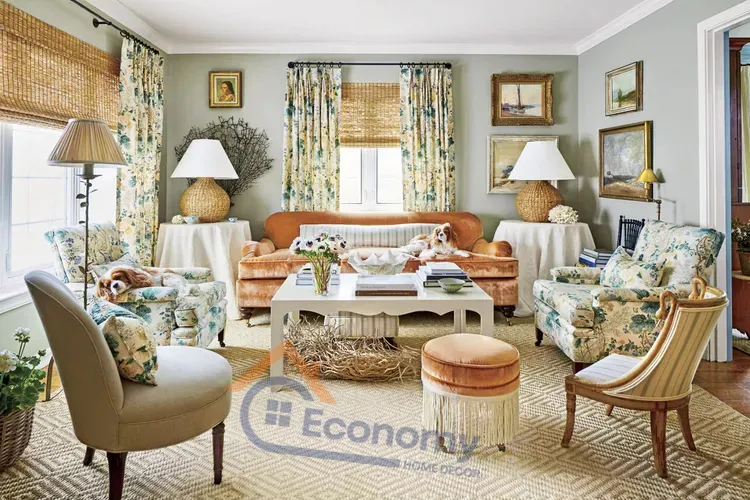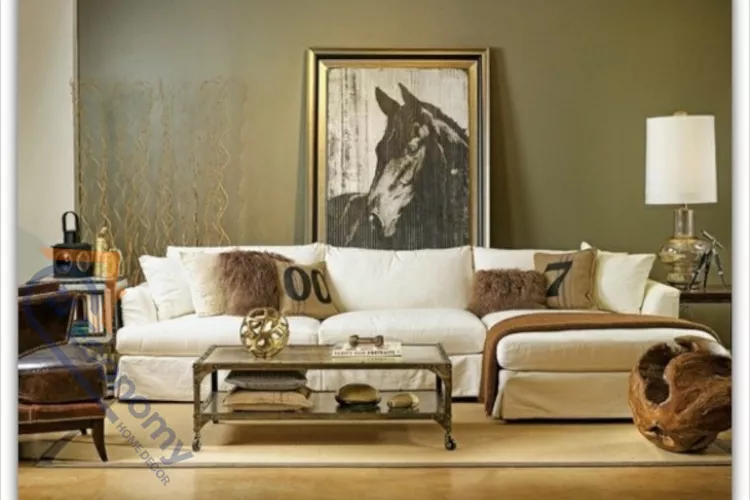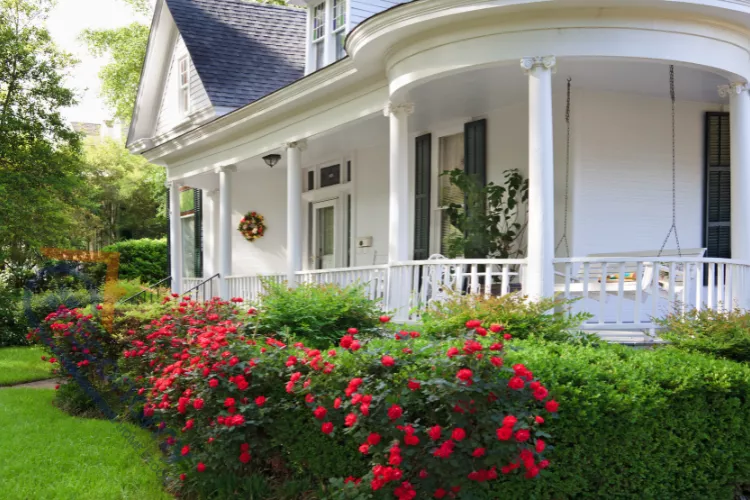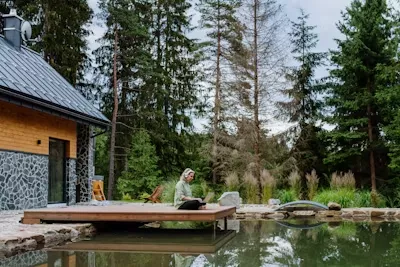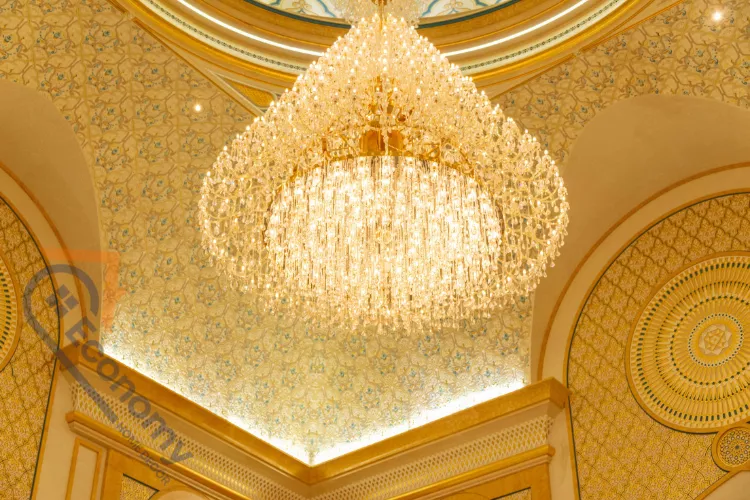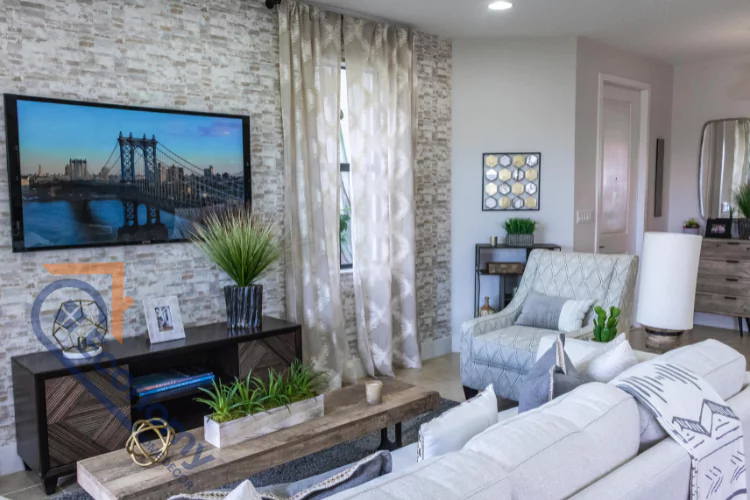Your lounge is the heart of your home – a place where memories are made, conversations flow, and relaxation takes center stage. Creating the perfect lounge space doesn’t have to be overwhelming or expensive. With the right lounge decoration ideas, you can transform any living area into a stunning sanctuary that reflects your personality and lifestyle.
Whether you’re working with a spacious formal living room or dealing with lounge decor ideas for small spaces, this comprehensive guide will help you navigate the exciting world of interior design. From color schemes to furniture arrangement, lighting to accessories, we’ll explore every aspect of creating your dream living space.
The beauty of lounge decorating lies in its flexibility. You can embrace simple lounge decor ideas for a minimalist approach, or dive into rich, elaborate designs that make a bold statement. The key is understanding your space, your needs, and your personal style preferences.
Understanding Your Lounge Space and Style
Before diving into specific home lounge decorating ideas, it’s essential to assess your current space and identify your design preferences. Take a moment to observe your lounge’s natural lighting, architectural features, and existing elements that you’d like to keep or change.
Consider the primary function of your lounge. Will it serve as a formal entertaining space, a casual family gathering area, or a multi-purpose room? This decision will significantly influence your decorating choices and help you select appropriate furniture, colors, and accessories.
Your personal style plays a crucial role in creating a cohesive design. Do you gravitate toward clean, modern lines, or do you prefer the warmth of traditional elements? Perhaps you’re drawn to eclectic mixes that combine various styles and periods. Understanding your preferences will guide your decision-making process and ensure your finished space feels authentically you.
Don’t forget to consider your lifestyle needs. If you have children or pets, durability and easy maintenance might be priorities. If you frequently entertain guests, creating conversation areas and ensuring adequate seating becomes essential. These practical considerations will help you make smart choices that balance beauty with functionality.
Color Schemes That Transform Your Lounge
Color has the power to completely transform the mood and perception of your lounge space. When exploring lounge decor ideas, color should be one of your first considerations, as it sets the foundation for all other design elements.
Grey lounge decorating ideas have gained tremendous popularity for their versatility and timeless appeal. Grey serves as an excellent neutral base that can be paired with virtually any accent color. Light greys create an airy, sophisticated atmosphere, while darker charcoal tones add drama and intimacy. Consider incorporating various shades of grey through furniture, wall paint, and textiles to create depth and visual interest.
Blue lounge decorating ideas offer a wide spectrum of possibilities, from calming sky blues to rich navy tones. Blue naturally promotes relaxation and tranquility, making it perfect for lounge spaces. Pair soft blues with white and cream for a coastal-inspired look, or combine deep navy with gold accents for a more luxurious feel.
Green lounge decorating ideas bring the outdoors inside and create a refreshing, natural atmosphere. Sage green works beautifully in traditional and modern settings alike, while emerald green makes a bold, sophisticated statement. Green pairs exceptionally well with neutral tones and natural materials like wood and stone.
Teal lounge decorating ideas offer the perfect balance between blue and green, creating spaces that feel both energizing and calming. This versatile color works beautifully as an accent wall color or through furniture and accessories. Teal pairs wonderfully with coral, gold, and cream tones.
Creating Cohesive Color Palettes
When developing your color scheme, follow the 60-30-10 rule: use your dominant color for 60% of the room, a secondary color for 30%, and a bold accent color for the remaining 10%. This approach ensures balance while allowing for visual interest and personality.
Consider the psychological effects of colors when making your selections. Warm colors like reds, oranges, and yellows create energy and intimacy, while cool colors like blues, greens, and purples promote calm and relaxation. Neutral colors provide stability and allow other elements to shine.
Don’t be afraid to experiment with different shades and tones within your chosen color family. Monochromatic schemes using various shades of the same color can create sophisticated, harmonious spaces that feel both unified and dynamic.
Furniture Selection and Arrangement
The furniture you choose and how you arrange it can make or break your lounge design. Start with the largest pieces – typically your sofa and coffee table – and build around them. These anchor pieces should reflect your style while providing the comfort and functionality your space requires.
When working with small lounge decor ideas, furniture selection becomes even more critical. Choose pieces that serve multiple purposes, such as ottoman storage benches or nesting tables that can be tucked away when not needed. Consider furniture with exposed legs, which creates a sense of openness and makes spaces appear larger.
Scale is crucial in furniture selection. Oversized furniture can overwhelm a small space, while tiny pieces can look lost in a large room. Measure your space carefully and use painter’s tape to outline furniture placement before making purchases. This simple step can save you from costly mistakes and help you visualize the final arrangement.
Consider traffic flow when arranging furniture. Create clear pathways through the room, and ensure that people can move comfortably without bumping into furniture or feeling cramped. The goal is to create a layout that feels natural and functional while promoting conversation and relaxation.
Seating Solutions for Every Space
Your seating arrangement should encourage conversation while providing comfort for all users. In larger lounges, create multiple seating areas using a combination of sofas, chairs, and benches. This approach allows for more intimate conversations while accommodating larger groups when needed.
For smaller spaces, consider a sectional sofa that maximizes seating while fitting snugly into corners. Add a couple of accent chairs that can be easily moved when you need to accommodate more guests or create different conversation groupings.
Don’t overlook unconventional seating options like floor cushions, poufs, or bench seating. These flexible options can provide extra seating when needed while serving as footrests or side tables during everyday use.
| Lounge Style Comparison | Color Palette | Key Furniture | Best For |
|---|---|---|---|
| Modern Minimalist | White, grey, black accents | Clean-lined sofa, glass coffee table | Small spaces, busy lifestyles |
| Traditional Cozy | Warm browns, deep reds, gold | Leather sofa, wooden coffee table | Formal entertaining, classic homes |
| Bohemian Eclectic | Rich jewel tones, earth tones | Mix of vintage and modern pieces | Creative personalities, unique spaces |
| Scandinavian Fresh | White, light wood, soft pastels | Light wood furniture, neutral textiles | Minimalist lovers, bright spaces |
| Industrial Chic | Grey, black, metallic accents | Metal and wood combinations | Urban spaces, modern aesthetics |
Lighting Design for Ambiance and Function
Proper lighting can transform your lounge from ordinary to extraordinary. A well-designed lighting plan incorporates three types of lighting: ambient (general), task (functional), and accent (decorative). This layered approach ensures your space is both beautiful and functional throughout the day and evening.
Ambient lighting provides overall illumination for the room. This might include recessed ceiling lights, chandeliers, or large pendant lights. The key is to create even, comfortable lighting that allows people to move safely through the space while creating a welcoming atmosphere.
Task lighting serves specific functions, such as reading or working on hobbies. Table lamps, floor lamps, and under-cabinet lighting fall into this category. Position task lighting carefully to avoid glare and shadows, ensuring that activities can be performed comfortably.
Accent lighting adds drama and visual interest to your space. This includes wall sconces, picture lights, and decorative lamps that highlight architectural features or artwork. Accent lighting should be subtle yet effective, drawing attention to your favorite design elements.
Natural Light Maximization
Don’t underestimate the power of natural light in your lounge design. Clean windows regularly and choose window treatments that allow maximum light penetration while providing privacy when needed. Sheer curtains, light-filtering blinds, and café curtains are excellent options for maintaining brightness.
Consider using mirrors strategically to reflect and amplify natural light throughout your space. Position mirrors across from windows or near light sources to create the illusion of additional windows and make your lounge feel larger and brighter.
Light-colored walls and furniture also help maximize the impact of natural light. While dark colors can create drama and intimacy, they also absorb light. If you prefer darker colors, balance them with lighter elements and ensure adequate artificial lighting.
Small Space Lounge Solutions
Working with lounge decor ideas for small spaces requires creativity and strategic planning. The key is to maximize every square foot while creating a space that feels open, functional, and stylish. Start by identifying the essential functions your lounge must serve, then prioritize furniture and accessories accordingly.
Small lounge decor ideas often benefit from vertical design elements. Use tall bookshelves, floor-to-ceiling curtains, and vertically oriented artwork to draw the eye upward and create the illusion of height. This technique makes ceilings appear higher and rooms feel more spacious.
Multi-functional furniture is your best friend in small spaces. Ottoman storage benches provide seating and hide clutter, while console tables can serve as desks, dining surfaces, or display areas. Nesting tables offer flexibility, allowing you to expand surface area when needed and tuck pieces away when not in use.
Consider built-in solutions where possible. Custom shelving, window seats with storage, and built-in entertainment centers maximize functionality while maintaining a clean, uncluttered appearance. While these solutions require more investment upfront, they often provide better long-term value and functionality.
Creating the Illusion of Space
Light colors naturally make spaces feel larger and more open. Stick to a light, cohesive color palette throughout your small lounge, using darker colors sparingly as accents. This approach creates visual continuity and prevents the space from feeling choppy or cramped.
Furniture with exposed legs creates visual breathing room and makes spaces appear larger. Choose sofas, chairs, and tables that sit off the ground rather than pieces that extend all the way to the floor. This simple trick allows light and sight lines to flow under furniture, creating a sense of openness.
Avoid blocking natural light sources with large furniture pieces. Instead, arrange your layout to allow light to flow freely throughout the space. If you must place furniture near windows, choose pieces with open backs or transparent materials that won’t obstruct light.
Traditional and Formal Lounge Decorating
Traditional lounge decorating ideas emphasize classic elegance and timeless appeal. These spaces often feature rich fabrics, warm wood tones, and sophisticated color palettes that create inviting yet refined atmospheres. The key to successful traditional design lies in balancing formality with comfort.
Formal lounge decorating ideas require careful attention to symmetry and proportion. Pair matching table lamps, create balanced furniture arrangements, and choose accessories that complement rather than compete with each other. This approach creates a sense of order and sophistication that’s perfect for entertaining guests.
Rich fabrics play a crucial role in traditional lounge design. Consider velvet, silk, and high-quality cotton upholstery in deep, saturated colors. Layer these fabrics through throw pillows, curtains, and area rugs to create depth and luxury. Don’t be afraid to mix patterns, but ensure they share common colors or scales to maintain harmony.
Quality craftsmanship and attention to detail are hallmarks of traditional design. Invest in well-made furniture pieces with classic lines that will stand the test of time. Look for solid wood construction, quality hardware, and timeless silhouettes that won’t go out of style.
Incorporating Antiques and Heirlooms
Traditional lounges provide the perfect backdrop for displaying family heirlooms and antique pieces. These items add character and personal history to your space while serving as conversation starters. Mix antiques with newer pieces to prevent your space from feeling like a museum.
When incorporating older pieces, ensure they’re in good repair and appropriate scale for your space. A beautiful antique armoire might overwhelm a small lounge, while a delicate side table could get lost in a large room. Consider the proportions carefully to maintain balance.
Don’t feel obligated to furnish your entire lounge with antiques. Often, one or two special pieces can anchor a traditional design while allowing for more comfortable, modern seating and lighting options.
Victorian and Period-Specific Styling
Victorian lounge decorating ideas embrace opulence and rich ornamentation. This style celebrates pattern, color, and decorative elements in ways that create warm, inviting spaces full of personality and charm. While Victorian design can feel overwhelming if not executed carefully, when done right, it creates incredibly welcoming and interesting spaces.
Victorian color palettes often feature deep, rich tones like burgundy, forest green, and navy blue, accented with gold and cream. These colors create intimate, cozy atmospheres perfect for conversation and relaxation. Don’t be afraid to use bold colors on walls – they provide a dramatic backdrop for the layered textures and patterns characteristic of Victorian design.
Pattern mixing is essential in Victorian decorating. Combine florals, stripes, and geometric designs through wallpaper, upholstery, and accessories. The key to successful pattern mixing lies in varying the scale and ensuring patterns share common colors. Start with one dominant pattern and layer in smaller-scale designs as accents.
Furniture in Victorian lounges should feel substantial and comfortable. Look for pieces with curved lines, tufted upholstery, and rich wood finishes. Velvet and brocade fabrics add authenticity and luxury to the design. Don’t forget about vintage lighting – chandeliers, table lamps with fringed shades, and wall sconces all contribute to the period atmosphere.
Balancing Authenticity with Modern Comfort
While Victorian design celebrates ornamentation and pattern, modern living requires certain comforts and functionalities. Balance period-appropriate elements with contemporary conveniences by choosing furniture that looks Victorian but incorporates modern comfort features like quality foam cushioning and sturdy construction.
Update Victorian color schemes by incorporating lighter, more contemporary tones alongside traditional deep colors. This approach maintains the style’s dramatic character while creating spaces that feel fresh and livable by today’s standards.
Consider which Victorian elements speak to you most strongly, then incorporate those while leaving room for personal touches and modern conveniences. You might embrace the color palette and furniture styles while choosing simpler window treatments, or focus on pattern and texture while keeping the overall color scheme more restrained.
Simple and Minimalist Approaches
Simple lounge decor ideas focus on creating calm, uncluttered spaces that promote relaxation and peace. This approach doesn’t mean boring or sparse – instead, it emphasizes quality over quantity and celebrates the beauty of well-chosen elements. Minimalist lounges can be incredibly warm and inviting when designed thoughtfully.
The foundation of simple lounge design lies in a neutral color palette and clean lines. Whites, greys, and natural tones create serene backdrops that allow key pieces to shine. Add warmth through natural materials like wood, stone, and linen rather than through color or pattern.
Furniture selection in minimalist lounges should prioritize function and quality. Choose pieces with simple, elegant lines that serve their purpose beautifully without unnecessary ornamentation. A well-made sofa in quality fabric, a simple coffee table, and perhaps one statement chair might be all you need to create a stunning space.
Storage becomes crucial in minimalist design since clutter disrupts the clean aesthetic. Invest in beautiful storage solutions that hide everyday items while contributing to the room’s design. Built-in shelving, attractive baskets, and furniture with hidden storage help maintain the uncluttered look.
Adding Warmth to Minimalist Spaces
Minimalist doesn’t have to mean cold or unwelcoming. Add warmth through texture rather than color or pattern. Layer different textures through throw pillows, area rugs, and window treatments. Natural materials like wood, wool, and linen add both visual and tactile interest.
Plants bring life and color to minimalist spaces without disrupting the clean aesthetic. Choose architectural plants with interesting shapes, or create groupings of smaller plants in simple, matching containers. The organic shapes and green color provide a beautiful contrast to the straight lines and neutral tones.
Lighting plays a crucial role in creating warmth in minimalist spaces. Layer different types of lighting to create ambiance and avoid the stark, cold feeling that can result from relying solely on overhead lighting. Table lamps, floor lamps, and candles all contribute to a warm, inviting atmosphere.
Window Treatments and Privacy Solutions
Window treatments serve both functional and aesthetic purposes in lounge design. They provide privacy, control light, and contribute significantly to your room’s overall style. The right window treatments can enhance your chosen design theme while solving practical problems.
For traditional lounge decorating ideas, consider rich fabrics like velvet or silk in deep colors that complement your furniture and color scheme. Formal swags, valances, and panels with decorative hardware create an elegant, polished look appropriate for entertaining spaces.
Modern and minimalist lounges benefit from simpler window treatments that don’t compete with clean lines and uncluttered aesthetics. Roman shades, roller blinds, or simple panels in neutral colors provide privacy and light control without visual distraction.
Small lounge decor ideas often benefit from window treatments that maximize natural light while providing privacy when needed. Sheer curtains, cafe curtains, or top-down/bottom-up cellular shades allow light penetration while blocking views from outside.
Layering for Function and Style
Consider layering different types of window treatments for maximum flexibility and visual interest. Combine sheer curtains with heavier drapes for day and evening privacy options, or pair blinds with decorative panels for a custom look.
The hardware you choose can significantly impact your window treatment’s appearance. Decorative rods and finials add style and personality, while track systems provide clean, modern functionality. Consider the scale of your windows and room when selecting hardware – oversized elements can overwhelm small spaces.
Don’t forget about the practical aspects of window treatments. Consider how they’ll be cleaned, whether they’ll interfere with furniture placement, and how easy they’ll be to operate daily. Beautiful treatments that are difficult to use often end up neglected and ineffective.
Accessories and Personal Touches
Accessories are where your personality truly shines in lounge decorating. These finishing touches transform a well-designed space into a personalized haven that reflects your interests, travels, and family history. The key to successful accessorizing lies in careful curation rather than overwhelming abundance.
Start with larger accessories and work your way down to smaller details. Artwork, mirrors, and large decorative objects establish visual anchors, while smaller items like books, candles, and personal collections add layers of interest and personality.
Group accessories in odd numbers for the most pleasing arrangements. Three or five items typically look more natural and interesting than even-numbered groupings. Vary heights, shapes, and textures within each grouping to create visual interest while maintaining harmony.
Don’t feel compelled to fill every surface with accessories. Negative space is just as important as filled space in creating balanced, sophisticated arrangements. Allow some surfaces to remain clear, and resist the urge to place something on every available shelf or table.
Creating Meaningful Vignettes
The most successful accessory arrangements tell a story or reflect a theme. Group items that share common elements like color, material, or origin. A collection of blue and white ceramics, a grouping of travel photographs, or an arrangement of natural objects can create compelling focal points.
Consider the scale of your accessories in relation to your furniture and room size. Large rooms can handle bigger, more dramatic accessories, while smaller spaces benefit from more delicate, carefully chosen pieces. Ensure accessories are proportionate to the furniture they accompany.
Rotate accessories seasonally to keep your lounge feeling fresh and current. Store some items and bring out others to reflect changing seasons, holidays, or simply your evolving tastes. This approach allows you to enjoy more of your collections while preventing your space from feeling stagnant.
Budget-Friendly Decorating Tips
Creating a beautiful lounge doesn’t require unlimited funds. With creativity, patience, and strategic planning, you can achieve stunning results on virtually any budget. The key lies in prioritizing your spending and finding affordable alternatives to expensive solutions.
Start with a clear budget and stick to it. Allocate the largest portion of your budget to major pieces like seating and lighting, which have the most significant impact on your space’s functionality and appearance. Look for sales, clearance items, and floor models to stretch your furniture budget further.
DIY projects can significantly reduce decorating costs while adding unique, personal touches to your space. Consider painting furniture, creating artwork, or sewing window treatments. Even simple projects like recovering throw pillows or painting accent walls can make dramatic improvements at minimal cost.
Shop secondhand stores, estate sales, and online marketplaces for unique pieces at fraction of retail prices. With some creativity and elbow grease, these finds can become stunning focal points in your lounge. Don’t overlook the potential of pieces that need minor repairs or updates.
Maximizing Impact with Minimal Investment
Paint is one of the most cost-effective ways to transform any space. A fresh coat of paint on walls, furniture, or accessories can completely change a room’s appearance for relatively little money. Don’t be afraid to experiment with bold colors or techniques like accent walls.
Rearranging existing furniture costs nothing but can create an entirely new feeling in your space. Try different configurations, move pieces from other rooms, or repurpose items for new functions. Sometimes the perfect solution is already in your home.
Focus on high-impact changes that deliver maximum visual improvement for minimal cost. New throw pillows, artwork, lighting, or area rugs can dramatically update a space without requiring major furniture purchases. These smaller changes allow you to experiment with trends and personal style without significant financial commitment.
Seasonal Lounge Updates
Keeping your lounge feeling fresh and current doesn’t require complete redecorating. Seasonal updates allow you to enjoy variety and change while working within your existing design framework. These modifications can be as simple as switching out accessories or as involved as changing color schemes.
Spring updates might include lighter fabrics, fresh flowers, and brighter colors that reflect the season’s renewal and energy. Swap heavy winter throws for lighter cotton or linen versions, introduce fresh greenery, and open curtains to let in more natural light.
Summer decorating often emphasizes coolness and relaxation. Light colors, natural materials, and minimal accessories create spaces that feel refreshing during hot weather. Consider slipcovers in light fabrics, removing some accessories to create a more streamlined look, and incorporating coastal or natural elements.
Fall brings opportunities for richer colors and cozier textures. Introduce warm-toned pillows, heavier throws, and seasonal decorations that celebrate the harvest season. This is an excellent time to add layers and create inviting spaces for indoor entertaining.
Winter Comfort and Warmth
Winter lounge updates focus on creating warmth and comfort during cold months. Layer textiles, add extra lighting, and incorporate warmer colors to combat the season’s darkness. Heavy curtains, additional throw blankets, and warm lighting create inviting retreats from winter weather.
Don’t forget about scent as part of seasonal decorating. Candles, diffusers, and seasonal plants can enhance the atmosphere and create memorable associations with different times of year. Choose scents that complement your decorating theme and personal preferences.
Consider which seasonal elements you want to make permanent parts of your design and which you prefer to change regularly. Some people enjoy dramatic seasonal transformations, while others prefer subtle updates that maintain their core design aesthetic year-round.
Key Takeaways
Creating your dream lounge space involves careful consideration of multiple elements working together harmoniously. Whether you’re implementing grey lounge decorating ideas for a sophisticated neutral palette or exploring green lounge decorating ideas for a nature-inspired retreat, success lies in thoughtful planning and execution.
Remember that great lounge design balances beauty with functionality. Your space should reflect your personal style while serving your practical needs. Don’t be afraid to experiment with different approaches, from simple lounge decor ideas to more elaborate formal lounge decorating ideas, until you find what works best for your lifestyle.
Budget constraints don’t have to limit your creativity. Many of the most effective home lounge decorating ideas rely more on thoughtful arrangement and personal touches than expensive purchases. Focus on creating a cohesive design that tells your story and makes you feel comfortable and happy in your space.
Finally, remember that decorating is an ongoing process. Your lounge should evolve with your changing needs, tastes, and life circumstances. Don’t feel pressure to achieve perfection immediately – the most beautiful spaces develop over time through careful curation and personal touches.
Frequently Asked Questions
Light, neutral colors work best for small lounges as they reflect light and create the illusion of more space. Consider soft whites, light grays, or pale blues. You can add personality through colorful accessories and artwork while maintaining the spacious feeling.
Focus on layering textures rather than adding more furniture. Soft throws, textured pillows, area rugs, and warm lighting create coziness without cluttering. Choose warm-toned lighting and consider adding plants for a natural, welcoming feeling.
Arrange seating in a U-shape or around a central focal point like a coffee table. Ensure seats are no more than 8 feet apart for comfortable conversation. Create multiple seating areas in larger rooms to accommodate different group sizes.
Your area rug should be large enough that at least the front legs of your furniture sit on it. In most lounges, this means choosing a rug that’s at least 8×10 feet. The rug should define the seating area while leaving some floor space visible around the edges.
Paint is the most cost-effective update – consider an accent wall or painting existing furniture. New throw pillows, artwork, and lighting can dramatically change a space’s appearance. Rearranging existing furniture and adding plants are essentially free ways to refresh your space.

